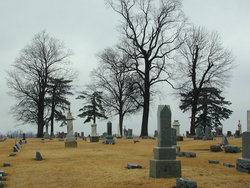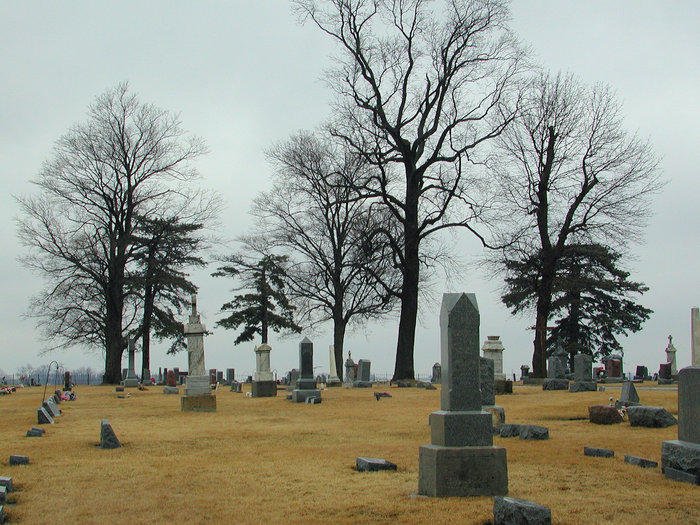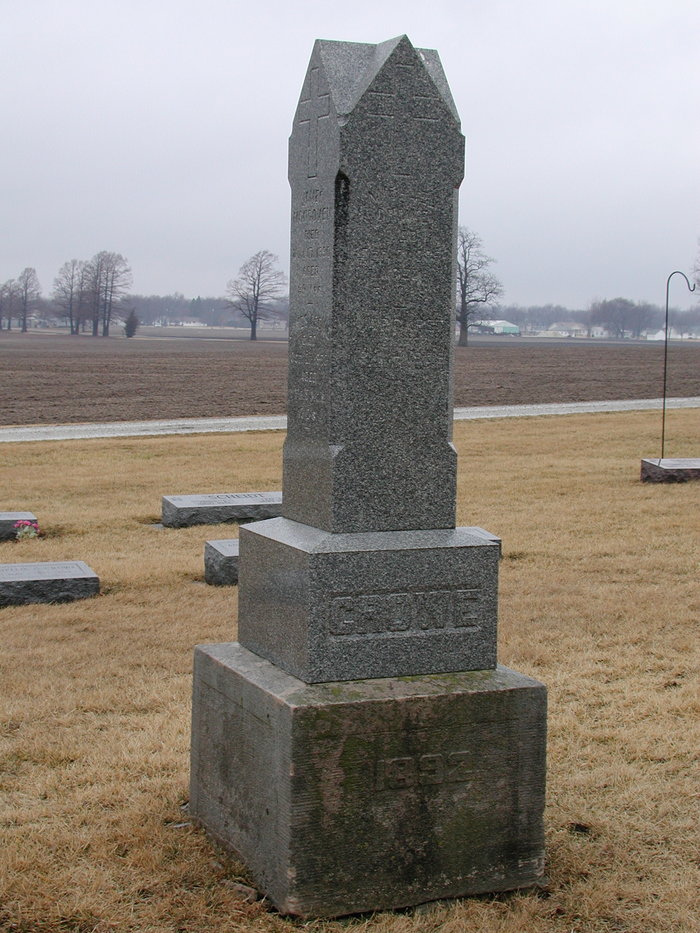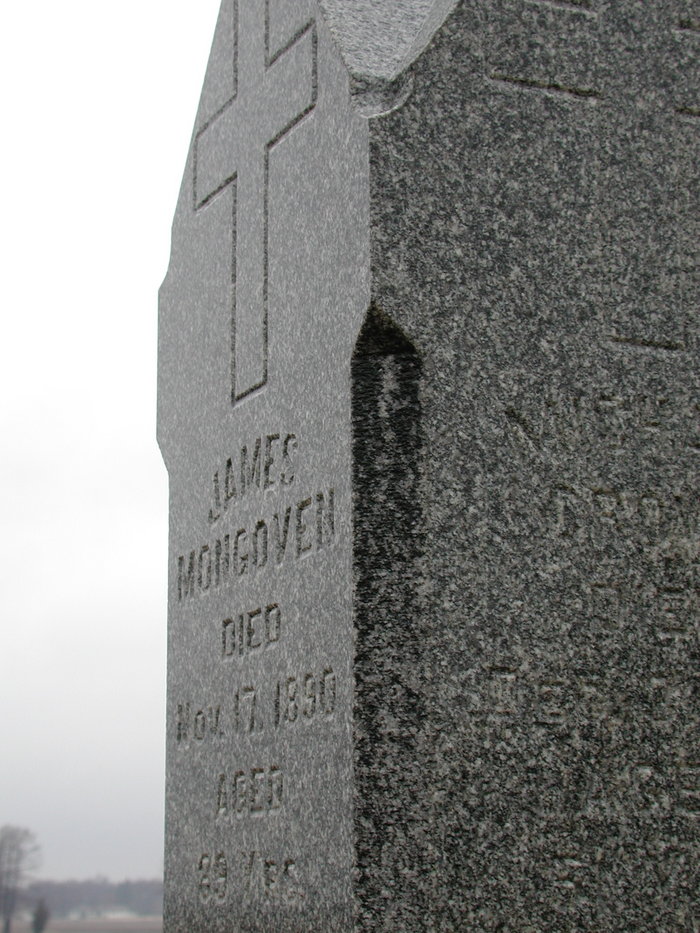James Mungovan (later Mongovan, and finally Mongoven) was born in Ireland around 1801. Although no church or civil records of his birth or baptism survive, it is likely he was born near the town of Ennis in County Clare. With the lack of Irish records, the names of his parents remain unknown. James married Catherine Costello (Costelloe) around 1830. Her parents, too, have never been determined, but there were numerous Costellos in County Clare and in neighboring County Limerick in the early 1800s.
Prior to leaving Ireland, the Mungovans likely lived in several locations around Ennis – probably in Lismulbreeda or Drummeen East, townlands a few miles southeast of Ennis. They had six known children: Dennis Henry Mongovan, John, Patrick J., Margaret, Catherine T., and Bridget (Delia).
As did droves of Irish emigrants, the Mongovans left Clare during or very shortly after the Great Hunger. The devastating potato blight and the famine it produced from 1845 to 1851 left Irish families destitute, hungry, and in poor health. It isn't known whether our family departed Ireland together or in successive groups. Nobody has determined if their sailing ship(s) landed at Quebec, Canada – as a few family historians have surmised – or in the United States. However, most sources strongly indicate the latter.
A strong case can be made for the Mongovans arriving first at Boston harbor. Son Patrick J. Mongoven's 1908 obituary states that he "landed in America" at age twelve and remained for four years in Boston. Patrick, the Mongovans' third child, was born in May 1840, so he would have immigrated around 1852 if his obituary can be trusted. But did he remain in the big city after his arrival? Probably not. Lowell, Massachusetts, thirty miles northwest of Boston, was an immigrant magnet during the early 19th century. Immigrant Irish laborers began constructing a series of canals off the Merrimack River in Lowell during the 1820s, along which numerous textile mills and factories were built. A couple miles south along the River Meadow Brook, the Lowell Bleachery was constructed in 1832. The brook flows into the Concord River which then merges with the Merrimack. The Bleachery's primary product was cotton print cloth, which was then distributed across the United States and Canada. It appears some of our family worked at this factory. By the mid-1800s, Lowell was the nation's largest industrial center. A fresh wave of Irish immigrants arrived when the famine struck, and 33,000 inhabitants made it Massachusetts' second-largest city by 1850. Yet many families abandoned Lowell by the end of that decade, as cheap immigrant labor, competition from factories elsewhere, and worker strikes put an end to Lowell's business dominance. Our Mongovans joined those who left.
The 1860 U.S. Census shows James and Catherine Mongovan, plus three of their children – Dennis, Patrick, and Bridget – in Iroquois County, Illinois. They resided on the table-flat prairie at Clifton in Chebanse Township, nearly 70 miles south of Chicago. James (age 55) was called a "day laborer" and lived with wife Catherine (56), Dennis (26), and Bridget (15). The family was by no means financially secure, as the value of their real estate was placed at $150 – less than $4,000 in 2010 inflation-adjusted dollars – and their personal estate at $75. Son Patrick (23) also lived at Clifton and worked as a laborer on G.M. Gere's farm. However, not all of the Mongovans had moved west by 1860. According to the census, daughter Margaret was a servant girl in the home of master engraver William Burroughs and his wife Ursula at Lowell. She later joined her family at Clifton, where she married Michael Crowe in January 1870. Unfortunately, John Mongovan and his sister, Catherine T., haven't been located in the 1860 census.
When the Civil War commenced in 1861, the Union army's demand for infrastructure – including railroad support – increased dramatically. In Illinois, the Chicago Rolling Mill was responsible for churning out rolled iron rails to support the war effort. Again, city directories help us pinpoint our ancestors' trails. Dennis and John Mongoven both worked at the mill during the war years. Dennis and Catherine (Darcy) Mongovan arrived first, followed by John. By September 1864, John had left Chicago for Whiteside County in southwest Illinois, where he married Susan Darcy (Catherine's younger sister). A James Mongoven worked at the Union Rolling Mill in Chicago, according to the 1866-67 Chicago city directory. This might have been our immigrant ancestor, up from Iroquois County in search of work after the Civil War – but our James would have been in his mid-60s and there were other men with the same name. The third Mongovan son, Patrick J., also was employed at the rolling mill. He married Hannah Ash and rose to the position of "heater" at the Chicago Rolling Mill. Patrick and Hannah spent the rest of their lives in Chicago, where they raised a large family. It is likely that Dennis, Catherine, and their boys had moved away from Chicago by that time to Clinton County, Iowa, as they no longer were listed in Chicago's city directory.
The Mongovans were devout Catholics, but few churches were built in primitive Iroquois County by the early 1860s. According to The History of Iroquois County, Clifton's first Mass took place in 1862 at the home of James "McGovern." The Clifton Centennial 1857-1957 clarified: "The earliest Mass, in Clifton, was celebrated in the house of James Mongoven in 1862 with Father Vanderpool officiating. Services were sometimes held in the warehouse, too, being held a month or six weeks apart when the priest could get here. The first Roman Catholic Church was built about 1865…named St. Peter's…" St. John the Baptist Church was built in 1875 at L'Erable in Ashkum Township, several miles southeast of Clifton.
Catherine (Costello) Mongovan, our 66-year-old Irish ancestor, died at Clifton on January 13, 1870. She was laid to rest two days later at St. John the Baptist Cemetery in L'Erable, with Father Charles Clement conducting the funeral service and son John Mongoven and neighbor Edward Gosselin serving as witnesses.
During the following June, the 1870 census was conducted. Daughter Margaret was newly married to Irish railroader Michael Crowe and had taken her widowed father into their home at Thawville in Onarga Township, a couple miles southwest of Ridgeville. James' last name was incorrectly spelled "Mongove." Also recorded were Margaret and three young stepdaughters, Mary, Catherine, and Margaret Crowe. These were Michael's daughters from his previous marriage to Ellen Dorsey (or Darcy) – yet another instance of a marriage among Darcys, Mongovans, and Crowes. Ellen and Michael had been married at Lowell, Massachusetts, on April 20, 1861. Their first two children were born in Massachusetts, before they moved west to Illinois. Ellen (Darcy) Crowe died in Illinois in 1868, after the birth of baby Margaret. In June 1870, newly remarried Michael must have been away from his Thawville home when the census enumerator arrived – railroading virtually ensured that.
It appears James spent the rest of his life with the Crowes. When the 1880 census was taken, an elderly James "Mongeron" (another misspelling!) boarded with his son-in-law, Mike Crowe, daughter Margaret, and a host of grandchildren – including step-granddaughters Mary, Kate and Maggie, and grandchildren Daniel, Jennie, Anna, Nellie, and Frank. Though the census indicates the family lived at Ridgeland, they still lived at their Thawville farm, adjacent to the Illinois Central railroad tracks.
Little is known of James' life during the 1880s, but he remained in the care of his daughter's family, which endured the crushing loss of Mike Crowe on December 3, 1885. Mike died after a gruesome railroad accident, which will be described below. James Mungovan died November 17, 1890, at age 89. Our immigrant ancestor was laid to rest in St. Mary's Cemetery in Gilman, Illinois. Years afterward, his name was etched into a black granite memorial stone commemorating Michael Crowe, Margaret (Mongovan) Crowe, and their son James.
James Mungovan (later Mongovan, and finally Mongoven) was born in Ireland around 1801. Although no church or civil records of his birth or baptism survive, it is likely he was born near the town of Ennis in County Clare. With the lack of Irish records, the names of his parents remain unknown. James married Catherine Costello (Costelloe) around 1830. Her parents, too, have never been determined, but there were numerous Costellos in County Clare and in neighboring County Limerick in the early 1800s.
Prior to leaving Ireland, the Mungovans likely lived in several locations around Ennis – probably in Lismulbreeda or Drummeen East, townlands a few miles southeast of Ennis. They had six known children: Dennis Henry Mongovan, John, Patrick J., Margaret, Catherine T., and Bridget (Delia).
As did droves of Irish emigrants, the Mongovans left Clare during or very shortly after the Great Hunger. The devastating potato blight and the famine it produced from 1845 to 1851 left Irish families destitute, hungry, and in poor health. It isn't known whether our family departed Ireland together or in successive groups. Nobody has determined if their sailing ship(s) landed at Quebec, Canada – as a few family historians have surmised – or in the United States. However, most sources strongly indicate the latter.
A strong case can be made for the Mongovans arriving first at Boston harbor. Son Patrick J. Mongoven's 1908 obituary states that he "landed in America" at age twelve and remained for four years in Boston. Patrick, the Mongovans' third child, was born in May 1840, so he would have immigrated around 1852 if his obituary can be trusted. But did he remain in the big city after his arrival? Probably not. Lowell, Massachusetts, thirty miles northwest of Boston, was an immigrant magnet during the early 19th century. Immigrant Irish laborers began constructing a series of canals off the Merrimack River in Lowell during the 1820s, along which numerous textile mills and factories were built. A couple miles south along the River Meadow Brook, the Lowell Bleachery was constructed in 1832. The brook flows into the Concord River which then merges with the Merrimack. The Bleachery's primary product was cotton print cloth, which was then distributed across the United States and Canada. It appears some of our family worked at this factory. By the mid-1800s, Lowell was the nation's largest industrial center. A fresh wave of Irish immigrants arrived when the famine struck, and 33,000 inhabitants made it Massachusetts' second-largest city by 1850. Yet many families abandoned Lowell by the end of that decade, as cheap immigrant labor, competition from factories elsewhere, and worker strikes put an end to Lowell's business dominance. Our Mongovans joined those who left.
The 1860 U.S. Census shows James and Catherine Mongovan, plus three of their children – Dennis, Patrick, and Bridget – in Iroquois County, Illinois. They resided on the table-flat prairie at Clifton in Chebanse Township, nearly 70 miles south of Chicago. James (age 55) was called a "day laborer" and lived with wife Catherine (56), Dennis (26), and Bridget (15). The family was by no means financially secure, as the value of their real estate was placed at $150 – less than $4,000 in 2010 inflation-adjusted dollars – and their personal estate at $75. Son Patrick (23) also lived at Clifton and worked as a laborer on G.M. Gere's farm. However, not all of the Mongovans had moved west by 1860. According to the census, daughter Margaret was a servant girl in the home of master engraver William Burroughs and his wife Ursula at Lowell. She later joined her family at Clifton, where she married Michael Crowe in January 1870. Unfortunately, John Mongovan and his sister, Catherine T., haven't been located in the 1860 census.
When the Civil War commenced in 1861, the Union army's demand for infrastructure – including railroad support – increased dramatically. In Illinois, the Chicago Rolling Mill was responsible for churning out rolled iron rails to support the war effort. Again, city directories help us pinpoint our ancestors' trails. Dennis and John Mongoven both worked at the mill during the war years. Dennis and Catherine (Darcy) Mongovan arrived first, followed by John. By September 1864, John had left Chicago for Whiteside County in southwest Illinois, where he married Susan Darcy (Catherine's younger sister). A James Mongoven worked at the Union Rolling Mill in Chicago, according to the 1866-67 Chicago city directory. This might have been our immigrant ancestor, up from Iroquois County in search of work after the Civil War – but our James would have been in his mid-60s and there were other men with the same name. The third Mongovan son, Patrick J., also was employed at the rolling mill. He married Hannah Ash and rose to the position of "heater" at the Chicago Rolling Mill. Patrick and Hannah spent the rest of their lives in Chicago, where they raised a large family. It is likely that Dennis, Catherine, and their boys had moved away from Chicago by that time to Clinton County, Iowa, as they no longer were listed in Chicago's city directory.
The Mongovans were devout Catholics, but few churches were built in primitive Iroquois County by the early 1860s. According to The History of Iroquois County, Clifton's first Mass took place in 1862 at the home of James "McGovern." The Clifton Centennial 1857-1957 clarified: "The earliest Mass, in Clifton, was celebrated in the house of James Mongoven in 1862 with Father Vanderpool officiating. Services were sometimes held in the warehouse, too, being held a month or six weeks apart when the priest could get here. The first Roman Catholic Church was built about 1865…named St. Peter's…" St. John the Baptist Church was built in 1875 at L'Erable in Ashkum Township, several miles southeast of Clifton.
Catherine (Costello) Mongovan, our 66-year-old Irish ancestor, died at Clifton on January 13, 1870. She was laid to rest two days later at St. John the Baptist Cemetery in L'Erable, with Father Charles Clement conducting the funeral service and son John Mongoven and neighbor Edward Gosselin serving as witnesses.
During the following June, the 1870 census was conducted. Daughter Margaret was newly married to Irish railroader Michael Crowe and had taken her widowed father into their home at Thawville in Onarga Township, a couple miles southwest of Ridgeville. James' last name was incorrectly spelled "Mongove." Also recorded were Margaret and three young stepdaughters, Mary, Catherine, and Margaret Crowe. These were Michael's daughters from his previous marriage to Ellen Dorsey (or Darcy) – yet another instance of a marriage among Darcys, Mongovans, and Crowes. Ellen and Michael had been married at Lowell, Massachusetts, on April 20, 1861. Their first two children were born in Massachusetts, before they moved west to Illinois. Ellen (Darcy) Crowe died in Illinois in 1868, after the birth of baby Margaret. In June 1870, newly remarried Michael must have been away from his Thawville home when the census enumerator arrived – railroading virtually ensured that.
It appears James spent the rest of his life with the Crowes. When the 1880 census was taken, an elderly James "Mongeron" (another misspelling!) boarded with his son-in-law, Mike Crowe, daughter Margaret, and a host of grandchildren – including step-granddaughters Mary, Kate and Maggie, and grandchildren Daniel, Jennie, Anna, Nellie, and Frank. Though the census indicates the family lived at Ridgeland, they still lived at their Thawville farm, adjacent to the Illinois Central railroad tracks.
Little is known of James' life during the 1880s, but he remained in the care of his daughter's family, which endured the crushing loss of Mike Crowe on December 3, 1885. Mike died after a gruesome railroad accident, which will be described below. James Mungovan died November 17, 1890, at age 89. Our immigrant ancestor was laid to rest in St. Mary's Cemetery in Gilman, Illinois. Years afterward, his name was etched into a black granite memorial stone commemorating Michael Crowe, Margaret (Mongovan) Crowe, and their son James.









